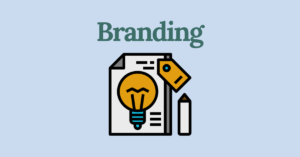In the world of digital marketing, engagement is a crucial metric that reflects how connected your audience feels with your brand. High engagement means your audience isn’t just passively consuming content—they are interacting, sharing, and building a relationship with your business. The more engaged your audience is, the more likely they are to become loyal customers, advocates, and repeat buyers.
In this blog, we will dive deep into the concept of engagement, explore different types, and provide actionable strategies to enhance engagement in your marketing efforts.
What is Engagement in Digital Marketing?
Engagement refers to the level of interaction, attention, and emotional connection your audience has with your brand. It can be measured through actions such as likes, comments, shares, clicks, time spent on a website, and even offline activities like attending events or making purchases. Engagement is critical because it goes beyond reach and impressions. It focuses on how involved your audience is and how likely they are to move down the marketing funnel toward conversion.
Types of Engagement;
1. Social Media Engagement: Includes likes, shares, comments, mentions, retweets, and replies. It reflects how your audience is interacting with your social media posts and whether they find them valuable enough to engage with.
2. Website Engagement:
Measured by metrics like page views, time on site, bounce rate, and click-through rates. It helps gauge how effectively your website content retains visitors and encourages them to explore further.
3. Email Engagement:
Includes open rates, click-through rates (CTR), and actions taken within the email (e.g., clicking a call-to-action link). Strong email engagement indicates that your messaging is resonating with your audience.
4. Content Engagement:
Reflects how your audience interacts with your blog posts, videos, infographics, or any form of content you produce. Key metrics include comments, social shares, and average viewing time.
5. Offline Engagement:
This includes customer interactions in physical stores, events, or direct brand interactions. It reflects how engaged your audience is with your brand beyond the digital space.
Why is Engagement Important-
1. Builds Relationships
Engagement is the foundation of building meaningful relationships with your audience. When customers feel connected, they are more likely to trust your brand and become repeat customers.
2. Increases Brand Loyalty
Highly engaged customers are often more loyal. They are more likely to make repeat purchases, leave positive reviews, and recommend your business to others.
3. Boosts Organic Reach
On platforms like social media, higher engagement boosts visibility. When users interact with your posts, algorithms tend to push your content to a broader audience, increasing your organic reach.
4. Improves Conversion Rates
Engaged users are more likely to convert because they have a stronger connection with your brand. Whether it’s signing up for a newsletter, making a purchase, or attending an event, engagement drives conversions.
5. Provides Valuable Feedback
Engaged customers offer valuable insights through comments, reviews, and feedback. This helps you refine your marketing strategies and better understand your audience’s needs.
Strategies to Increase Engagement;
1. Create Relevant and Valuable Content:
Content that addresses the needs, pain points, and interests of your audience is more likely to engage them. Ensure your content offers solutions, educates, entertains, or inspires your audience.
2. Leverage Interactive Content
Interactive content like polls, quizzes, contests, and surveys encourages active participation from your audience. It’s an excellent way to foster engagement and learn more about your customers.
3. Use Personalization
Personalization in emails, ads, and social media interactions increases engagement. Customers are more likely to interact with content that feels tailor-made for them.
4. Encourage User-Generated Content (UGC)
Encourage your audience to create content related to your brand. Whether it’s through reviews, testimonials, or social media posts, UGC is a powerful way to build trust and foster engagement.
5. Respond to Comments and Messages
Engaging with your audience in real time is critical. Whether it’s responding to comments on social media, replying to emails, or answering customer service inquiries, timely responses show that you value your audience’s input.
6. Use Visual Storytelling
Visual content like videos, images, and infographics tends to drive higher engagement than text alone. Use visuals to tell compelling stories that capture attention and encourage interaction.
7. Host Webinars or Live Q&A Sessions
Live events like webinars, Q&As, or virtual workshops allow for real-time interaction, giving your audience a chance to engage directly with your brand and ask questions.
8. Run Contests and Giveaways
Contests and giveaways are effective at increasing engagement and attracting new followers. Encourage users to like, comment, and share your content to participate, which boosts overall interaction.
9. Optimize for Mobile Users
With the majority of users accessing content via mobile devices, it’s crucial to ensure that your website, emails, and social media posts are mobile-friendly to boost engagement.
10. Implement A/B Testing
Regularly test different versions of your content to see which formats and approaches drive more engagement. Experiment with headlines, visuals, CTAs, and content length to determine what resonates most with your audience.
Measuring Engagement;
To track the success of your engagement strategies, you need to measure key metrics across various channels:
– On Social Media: Look at metrics like likes, shares, comments, and mentions. Tools like Facebook Insights and Twitter Analytics can help you track these.
– On Your Website: Google Analytics can provide insights into user behavior, such as time on page, bounce rate, and click-through rates.
– In Email Marketing: Track open rates, click-through rates, and responses to gauge how well your email campaigns are engaging your audience.
Conclusion;
Engagement is the cornerstone of a successful digital marketing strategy. It fosters stronger relationships with your audience, builds brand loyalty, and ultimately drives conversions. By creating valuable content, encouraging interaction, and responding to your audience’s needs, you can boost engagement and strengthen your brand’s presence online.
Remember, building engagement is an ongoing process. Continuously refine your approach by analyzing data and adjusting your strategies to keep your audience engaged and connected to your brand.




